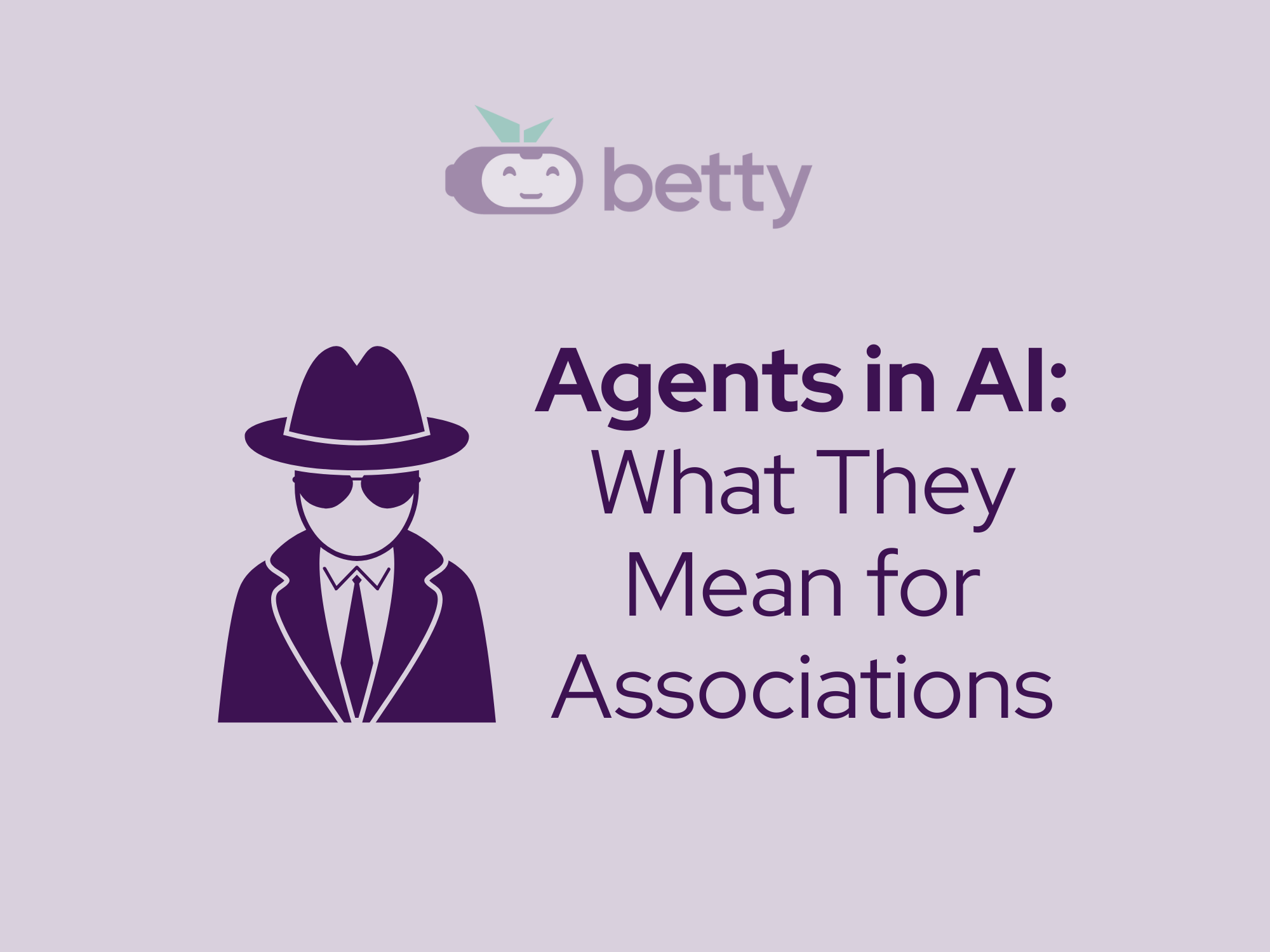AI isn’t just for the tech giants. Associations are already putting it to work in powerful,...
The word “agent” has quickly become one of the most overused buzzwords in the AI space. Every week, new tools are promoted as “AI agents” that promise to automate workflows, make decisions, and replace human effort. But when the term is stretched so far that it covers almost anything powered by a language model, it begins to lose meaning. This matters for associations, where the focus is not just on technology but on serving members, preserving institutional knowledge, and delivering trusted expertise.
What the Term “Agent” Actually Means
In the field of AI research, an agent has a very specific definition. It is a system that can perceive its environment, reason about what to do next, and then take actions that influence the environment in order to reach a goal. Even something as simple as a thermostat qualifies: it senses the temperature, decides whether it should heat or cool, and acts on that decision. Modern AI agents often use language models as the reasoning engine, but the basic structure is the same: perception leads to decision, which then leads to action and outcome.
How the Term Is Commonly Used (and Misused)
Today the word “agent” is applied much more loosely. Many tools that use language models are described as agents even when they do not actually make decisions or take independent action. A basic chatbot that only responds to questions is sometimes labeled an agent. A script that triggers a workflow through an API call is also given that title, even though its behavior is entirely rigid. Entire platforms are marketed as “teams of agents,” when in practice they are closer to a set of prompts running side by side with some light coordination.
The tools themselves may be useful, but the language used to describe them can be misleading. For associations, this distinction is important. If expectations are set too high, leaders may invest in systems that cannot deliver on the promise, creating frustration for both staff and members.
Where Agentic Design Helps (and Where It Does Not)
Overuse of the term leads people to imagine fully autonomous digital workers that can handle any task from start to finish. The reality is much narrower. When designed thoughtfully, agentic systems can deliver real value, especially for associations. This is what Betty can do: It can automate multi-step tasks without constant human intervention, choose the right resource to use based on context, and coordinate between systems to produce relevant answers or outcomes.
As an AI Knowledge Assistant, Betty does more than respond to predefined FAQs, (it’s not a basic chatbot). She engages dynamically with your association’s content, surfaces answers from your archives, and provides members and staff with support in real time. By preserving institutional knowledge and making it accessible, Betty helps associations deliver the right information to the right person at the right moment.
At the same time, it is important to be clear about what agentic design cannot do. These systems are not general problem solvers. They require access to the right data, tools, and prompts to perform well. No agent can out of the box be broadly thrown at every problem, they need training, for instance, your standards documents, your resource library, your institutional knowledge.
The strength of agentic design lies in the ability to complete complex tasks within the scope for which it was designed, not in limitless autonomy. Agents can deliver immense value when assigned to the tasks they are designed for, and agentic design structures increase the number of tasks that can be automated by creating intentional agents. With Betty, associations can enhance accessibility, streamline workflows, and extend the value of institutional knowledge, all while staying grounded in realistic expectations.
In short, agents are extremely valuable if we use the term correctly. They are structured systems that perceive, decide, and act within clear boundaries. At Betty, we believe in keeping those boundaries clear and in delivering AI that creates real value for associations. By focusing on transparency, intentional design, and member-centered results, Betty helps associations benefit from the promise of AI by driving value within your membership.
.png?width=173&height=70&name=Betty_RGB%201%20(1).png)



